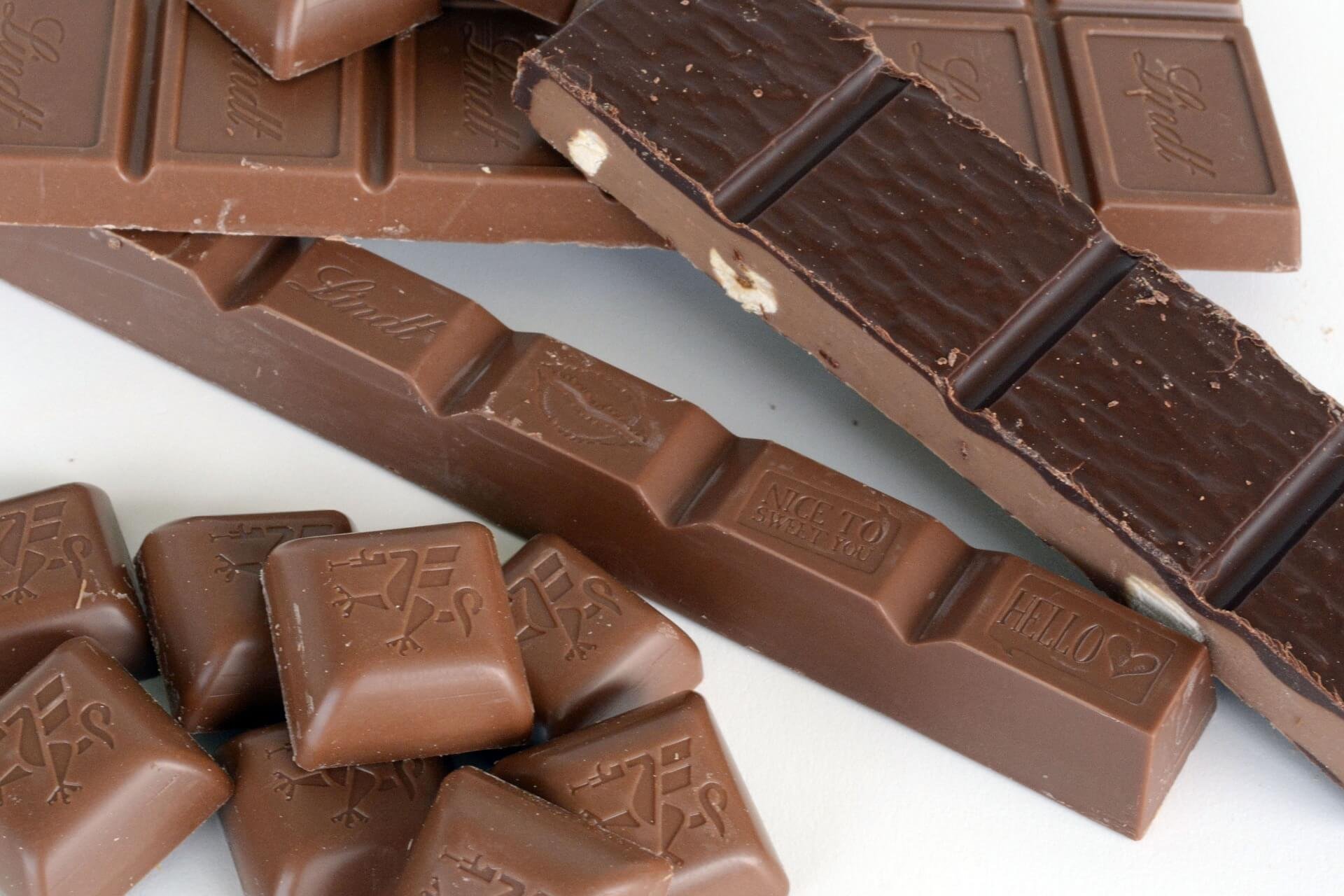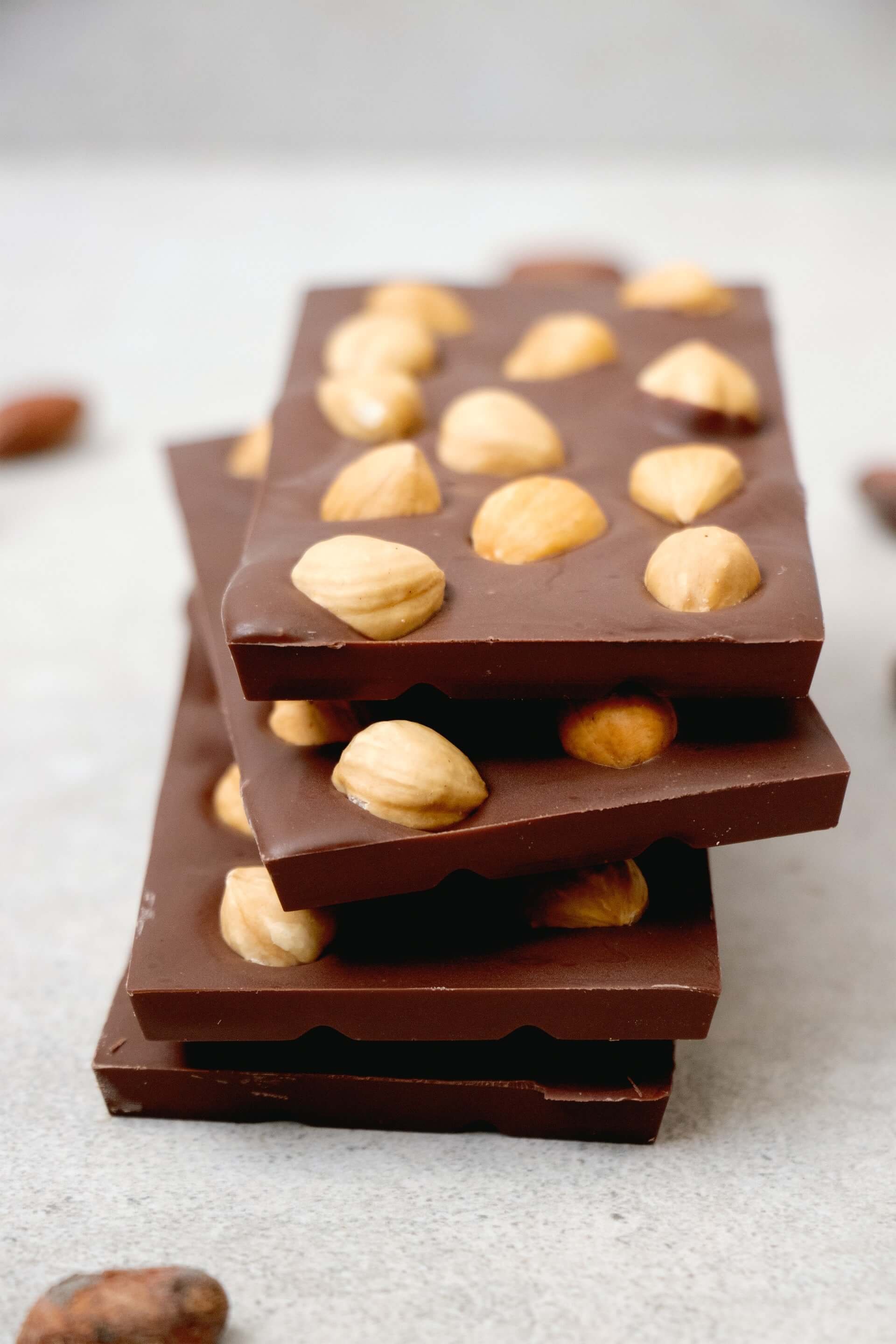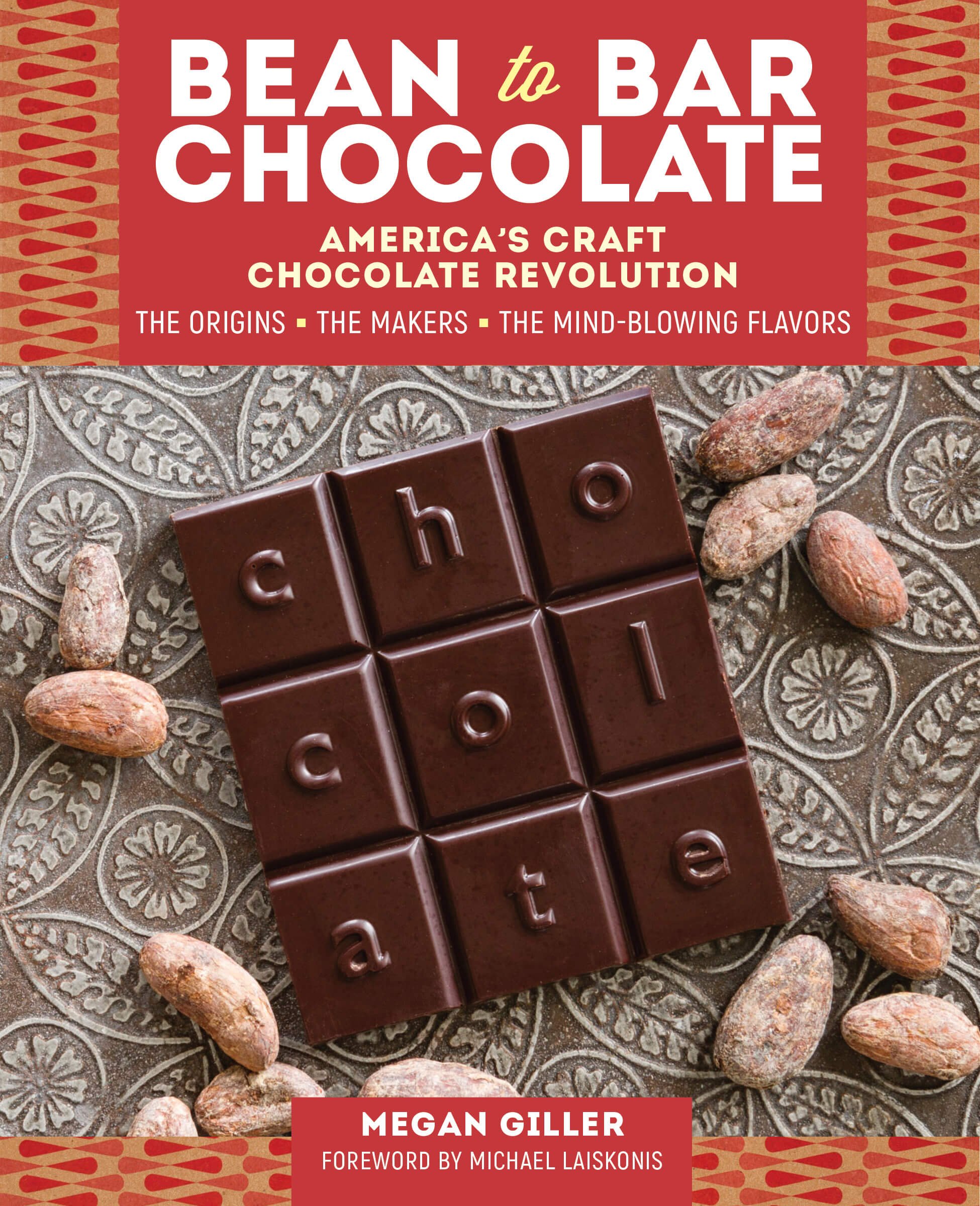Along the Milky Way —Discovering a Brave New World of Vegan Milk Chocolate
Vegan chocolate’s not a new thing. All chocolate starts with a plant, with the fruit of the cacao tree. What’s new — and we’re talking within the last five to eight years — is the explosion of vegan milk chocolate, the creamier, milder, often sweeter sister of dark chocolate. From craft chocolate makers to major chocolate brands including Valrhona, Lindt, Cadbury, and Hershey’s, suddenly everyone has vegan milk chocolate bars on the market or in development.
“There’s worldwide interest in making vegan milk chocolate,” says craft chocolate maker Mackenzie Rivers of Map Chocolate. “It’s so exciting to see, for all the different reasons that go with that.” Those different reasons include a vegan lifestyle’s beneficial impacts on health and sustainability. Great, noble, even, but the real driver in commercial vegan milk chocolate is sales. According to a poll by Swiss chocolate maker Barry Callebaut, 74% of millennials not only want but expect plant-based chocolate, up from 25% just two years ago, and the pandemic has only increased our chocolate lust.
Milk chocolate as we know it has only been around for 150 years or so, created by Daniel Peter, a Swiss innovator who used milk powder, and eventually went on to co-found Nestle. It was not easy. Cacao and milk, be it bovine or botanical, do not by nature love each other. As Peter discovered, batch after botched batch, getting them to coalesce and create milk chocolate involves an almost alchemical process. This usually involves tempering (heating and cooling the chocolate to stabilize it) and a matchmaker by way of fat. Often that fat is cocoa butter, the fat naturally in cacao beans. It can also be an added emulsifier or blending agent. This binds the dairy to the cacao and contributes to the creamy dreaminess we crave.
The Problem with Nuts
The pleasure of milk chocolate is as much about mouthfeel as taste. Milk chocolate should melt on the tongue with a smooth, sensuous yielding. The challenge has been achieving that luscious texture without dairy milk. Nut milks, with their higher percentage of fat, can offer milk chocolate’s signature creaminess. Alas, tree nuts — almonds, cashews, macadamias, and such — are among the 14 recognized food allergens. Sending sensitive consumers into anaphylactic shock is just bad for business. Soy is also a major allergen. So, for that matter, is dairy.
That leaves coconut, and craft brands including award-winning Endorfin and Charm School (alas just shuttered after a decade) embraced it. So, at first, did Map Chocolate’s Rivers. She began making coconut-based vegan milk chocolate in 2016, but it was not an enduring relationship.
Map Chocolate Umami Bar photo credit Map Chocolate
Coconut the disruptor
Though beloved by vegans for its richness, coconut’s flavor can be pushy, “Coconut is always going to be in your face,” Rivers says. She also found coconut did not go gently into that good chocolate. “Coconut is a super-strong disruptor of cocoa butter. Any time you’re going to do a regular milk or dark milk chocolate, you have to increase the amount of cocoa butter,” she explains.
Her solution was to create a unique proprietary tempering method. She also, along with Charm School and Endorfin, dialed down coconut’s distinctive taste by dialing up the amount of quality cacao. The result is a niche which chocolate expert Megan Giller calls dark milk.
Bean to Bar Chocolate photo credit ChocolateNoise
Vegan Dark Milk
“I’m a huge a fan of dark milk chocolate,” says Giller, founder of Chocolate Noise and the author of Bean-to-Bar Chocolate. “It has a high percentage of cocoa but then it also has milk added to it. You get the best of both worlds, intense chocolate flavors and creaminess, that luscious mouthfeel.”
Brad Kintzer, TCHO’s chief chocolate maker agrees. “What people love about milk is the creaminess.” In describing TCHO’s plant-based bars he says, “We didn’t want it to be overly sweet. We wanted to reduce that sweetness.” This is where things get confusing. “Chocolate makers have to think about how they market their product,” says Rivers, who also runs the craft chocolate school, The Next Batch. “When you say, Hey this is vegan milk chocolate, some people come to it with expectations of Hershey’s or Dove bars.”
Count among those people David Benzaquen. The CEO and founder of the online vegan market Plantbelly, Benzaquen is an unabashed vegan milk chocolate lover, accent on the milk. “Most attempts are still on the more bitter side, and I'm seeking that sweet/creamy/milky experience one gets with a Hershey, Nestle, Cadbury Flake.”
The answer, says Rivers, may be rice. Rice milk makes for watery drinking, but rice powder, made from dried rice and rice syrup, “creates a really nice vegan milk chocolate.” The English brand NOMO (for No Missing Out) and US brand Enjoy Life, which market to food-sensitive folks, both make an allergen-free rice milk chocolate bar. Dark this is not. Sugar’s the primary ingredient, followed closely by cocoa butter, so that sweet creaminess is built right in.
Plant Based Milk Options
Many chocolate makers discovered making vegan milk chocolate “is not easy to get right. We tried all the usual suspects; soy and rice, just about everything,” says TCHO’s Kintzer. After three years in R&D, he and his team hit on “the perfect formula,” a triumvirate of cashew butter, coconut sugar and oat milk.
Ah, yes, enter the oat. “Oat milk oat works really well in chocolate,” says Giller. The texture is smooth and creamy, and compared to coconut, the flavor is “more neutral. Oats really compliments the nuttiness and toastiness of cocoa beans.” Oats are the key to the vegan milk chocolate bars made by Endangered Species, which nails the milk chocolate taste you loved as a kid. Oats also feature in many English and European vegan milk chocolate products, such Lindt’s new vegan oat-based milk chocolate bar . It’s yet to hit our shores, but has hit the British market, where they take their milk chocolate seriously.
American vegan chocolate makers — and vegan chocolate lovers — want you to take it seriously, too. Giller suggests you educate your palate. “We’re used to eating chocolate, that’s something we all understand. Tasting chocolate is different,” she says. “The most important thing is to let it melt in your mouth. We’re used to chewing our food, but the more you can let it melt, let it coat your tongue and your cheek, the more aromas and flavors you’ll get out of it.”
PlantBelly’s vegan chocolate flight lets you compare vegan milk chocolates side by side. So what does it for you, milky or dark milk? Oats? Coconut? Rice? Happily, there is no wrong answer. “It depends on your palate,” says Fran Costigan, Vegan Chocolate author and Rouxbe instructor. “It just has to taste really good.”
Milk chocolate has come a long way since Daniel Peter created it, and vegan milk chocolate offers the sweet promise of more to come. Think of the proliferation of
vegan milk options just within the past few years — almond, oat, cashew, hemp, pea, flax, even banana. Map Chocolate’s Rivers has tried them all. These days, she’s making vegan dark milk chocolate with mesquite, quinoa and cassava.
“The plant world,” says TCHO’s Kintzer, “is infinite.”






